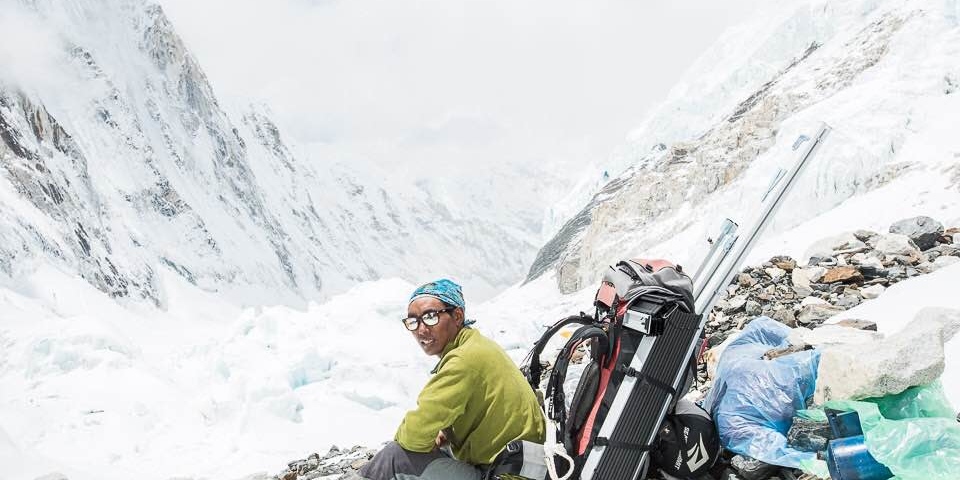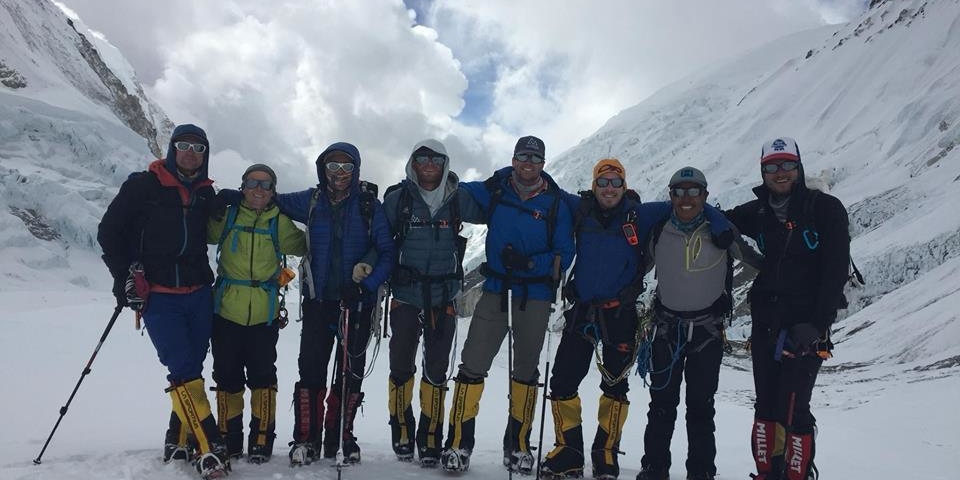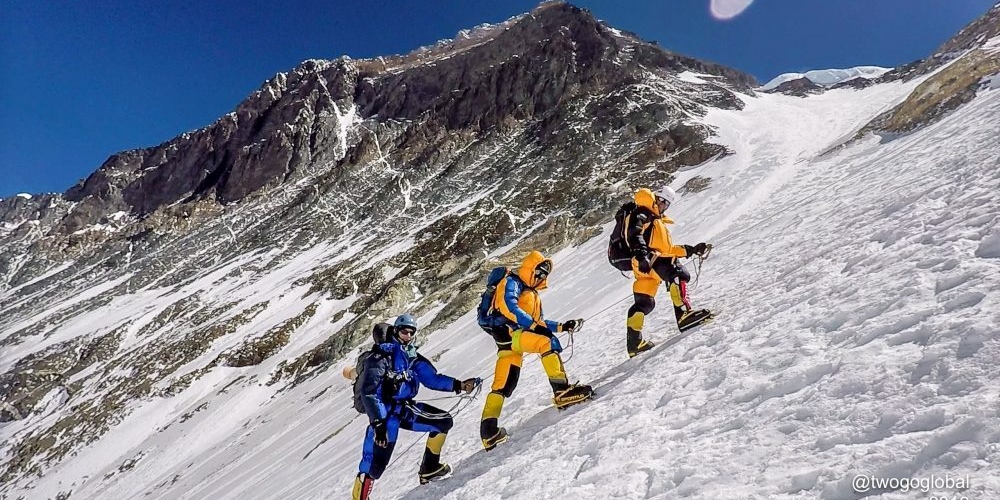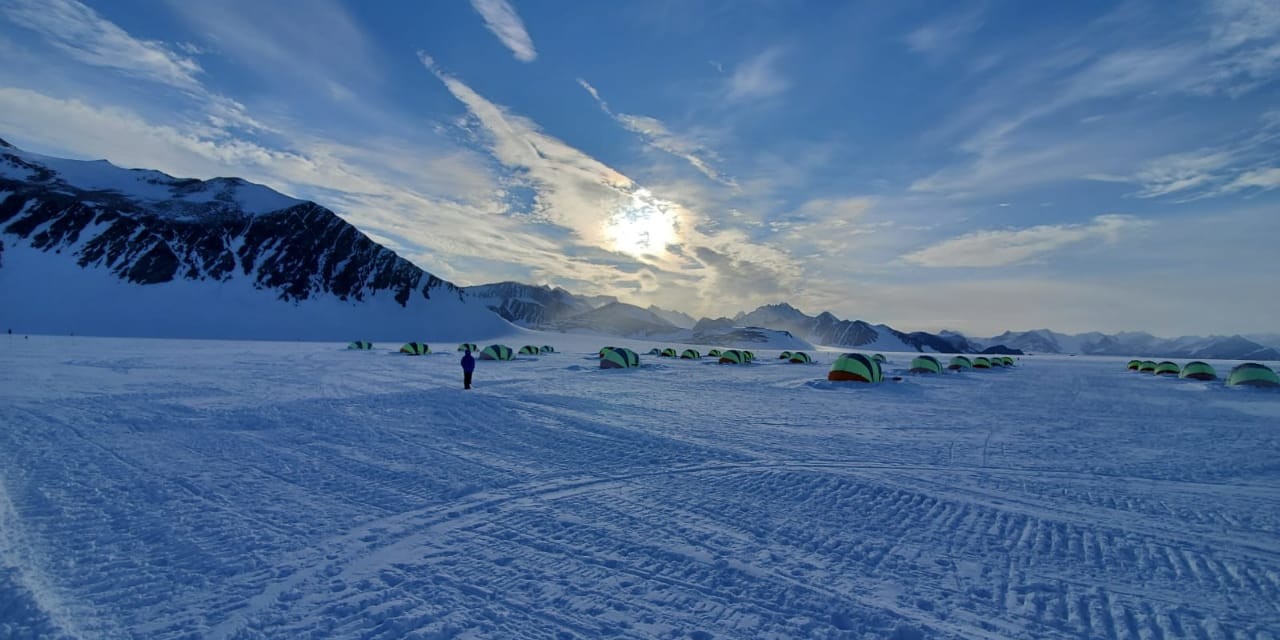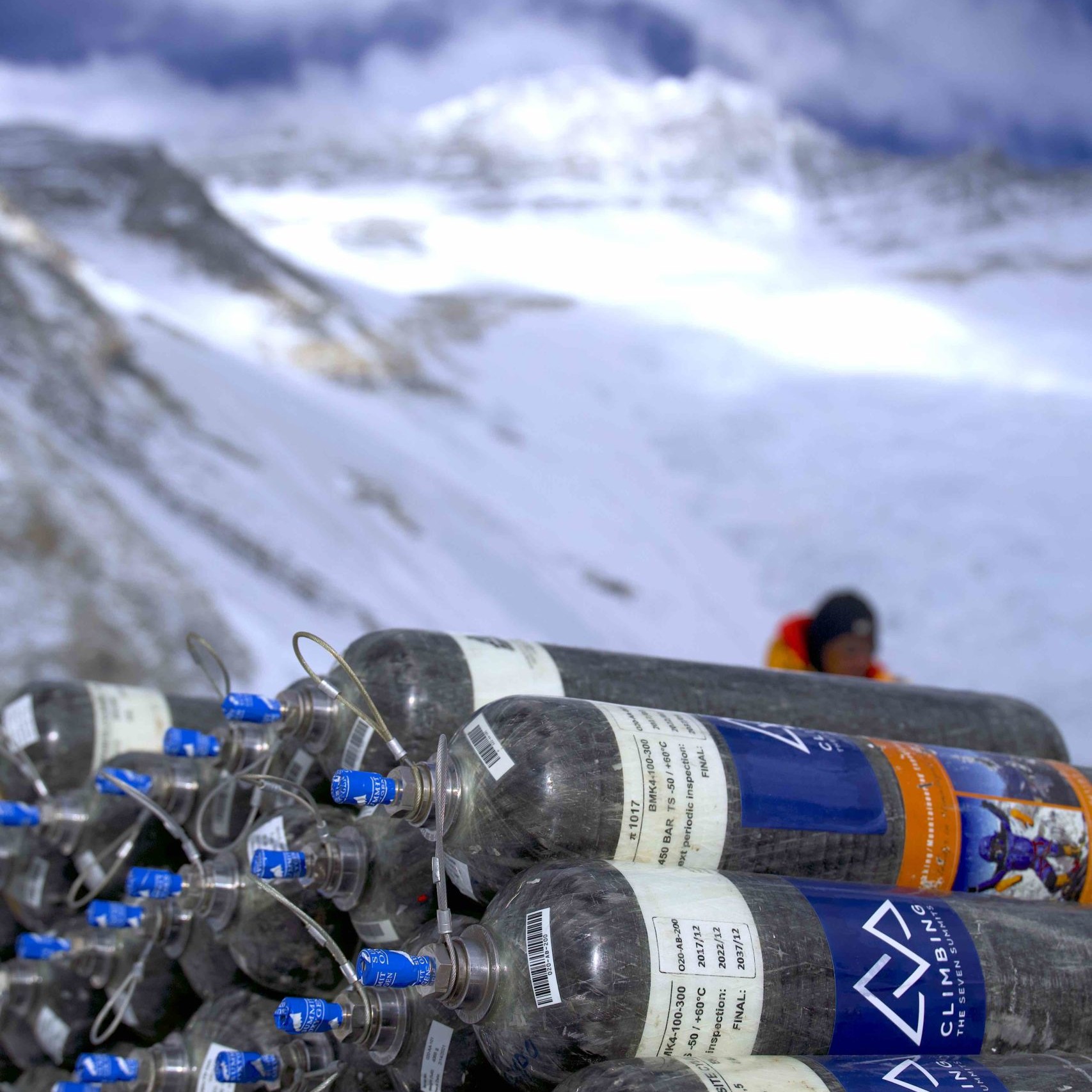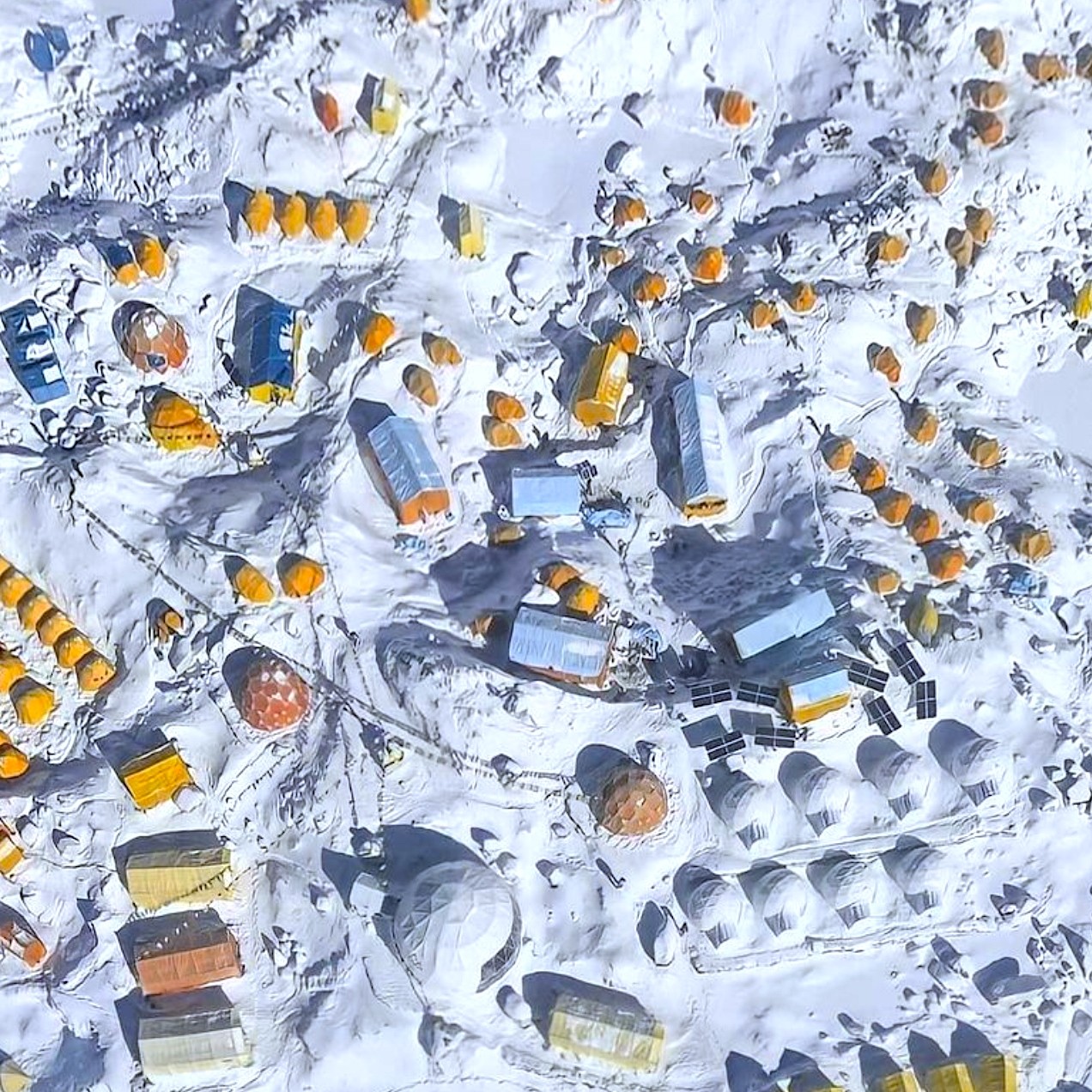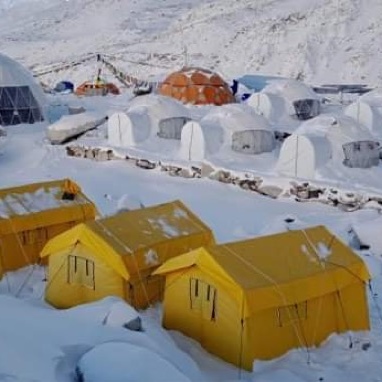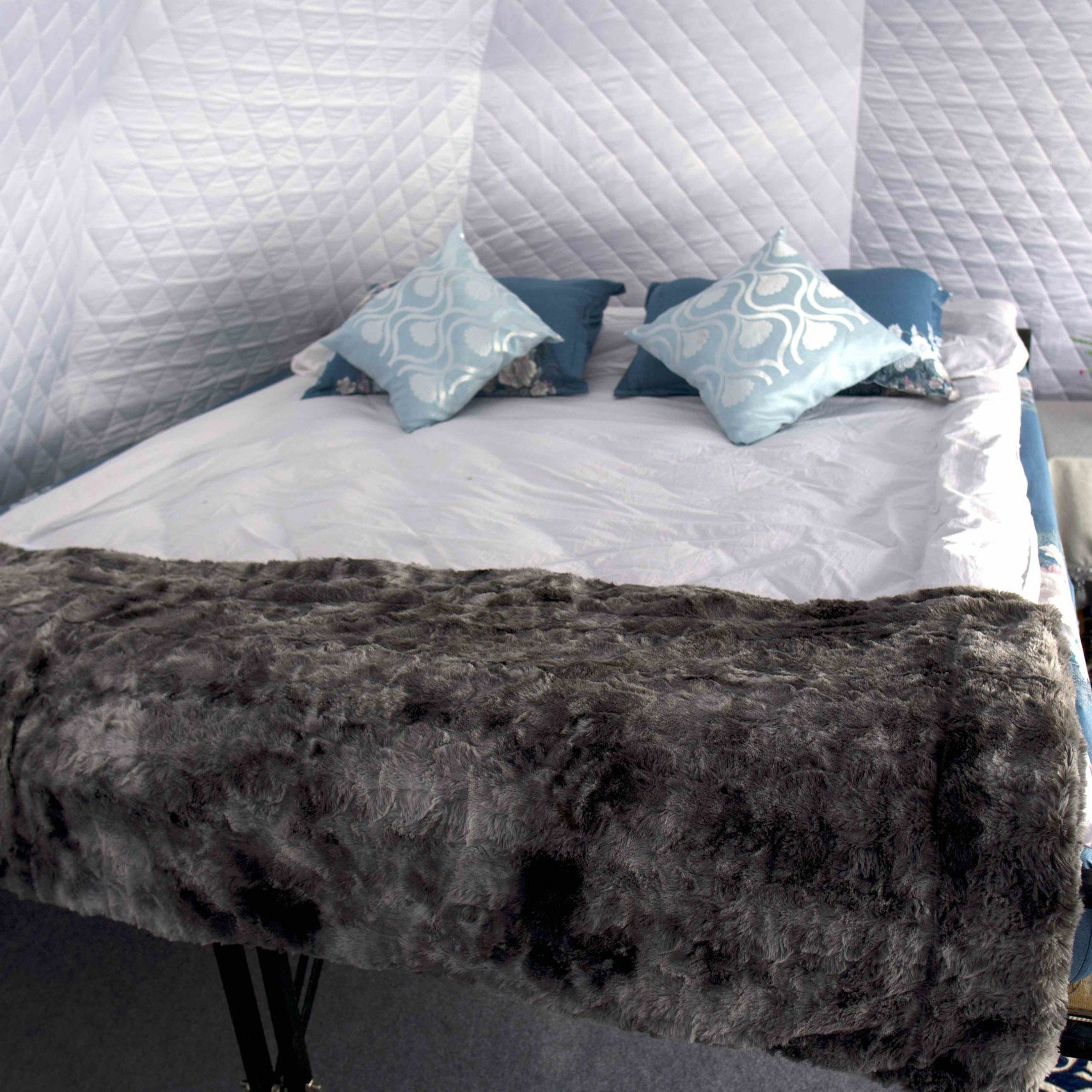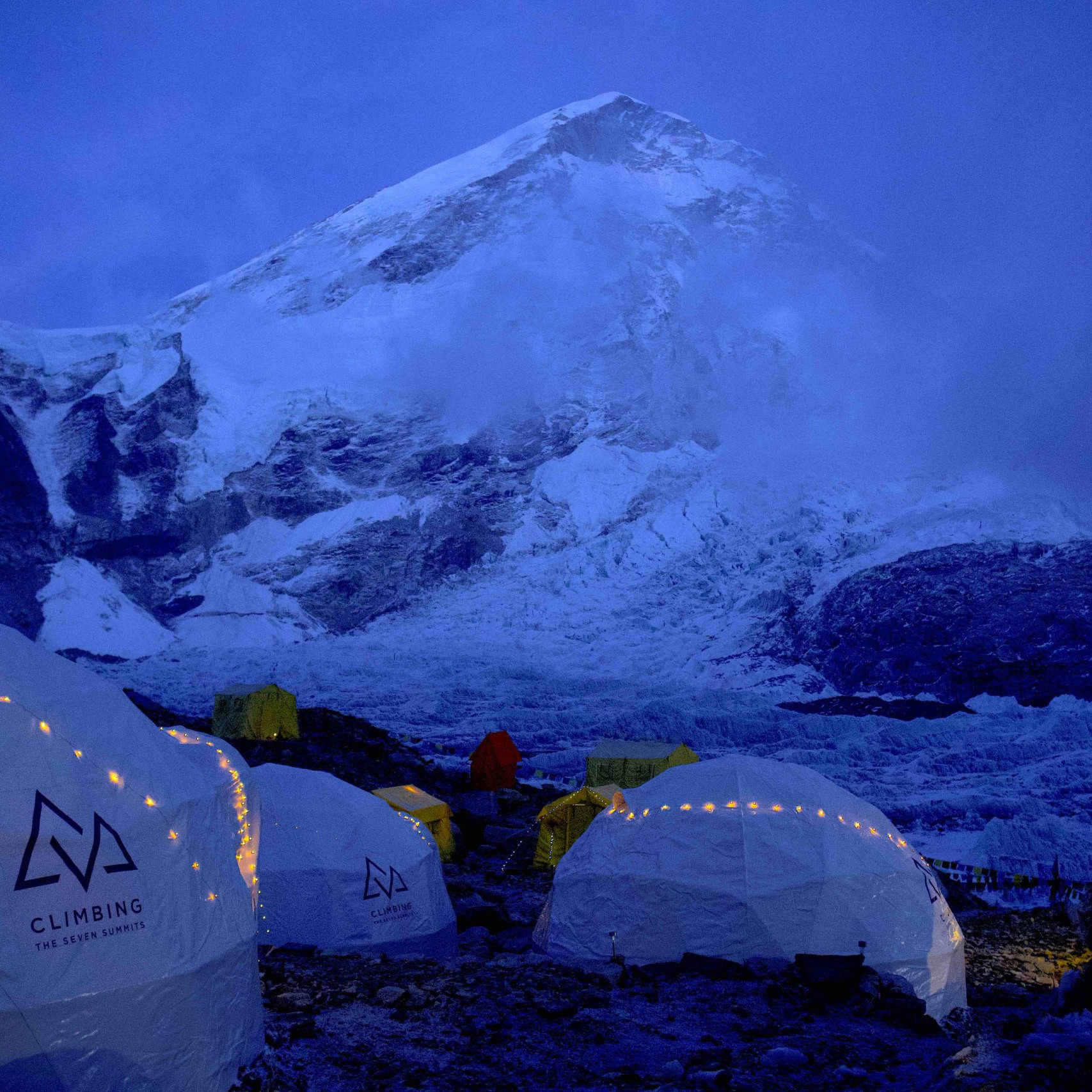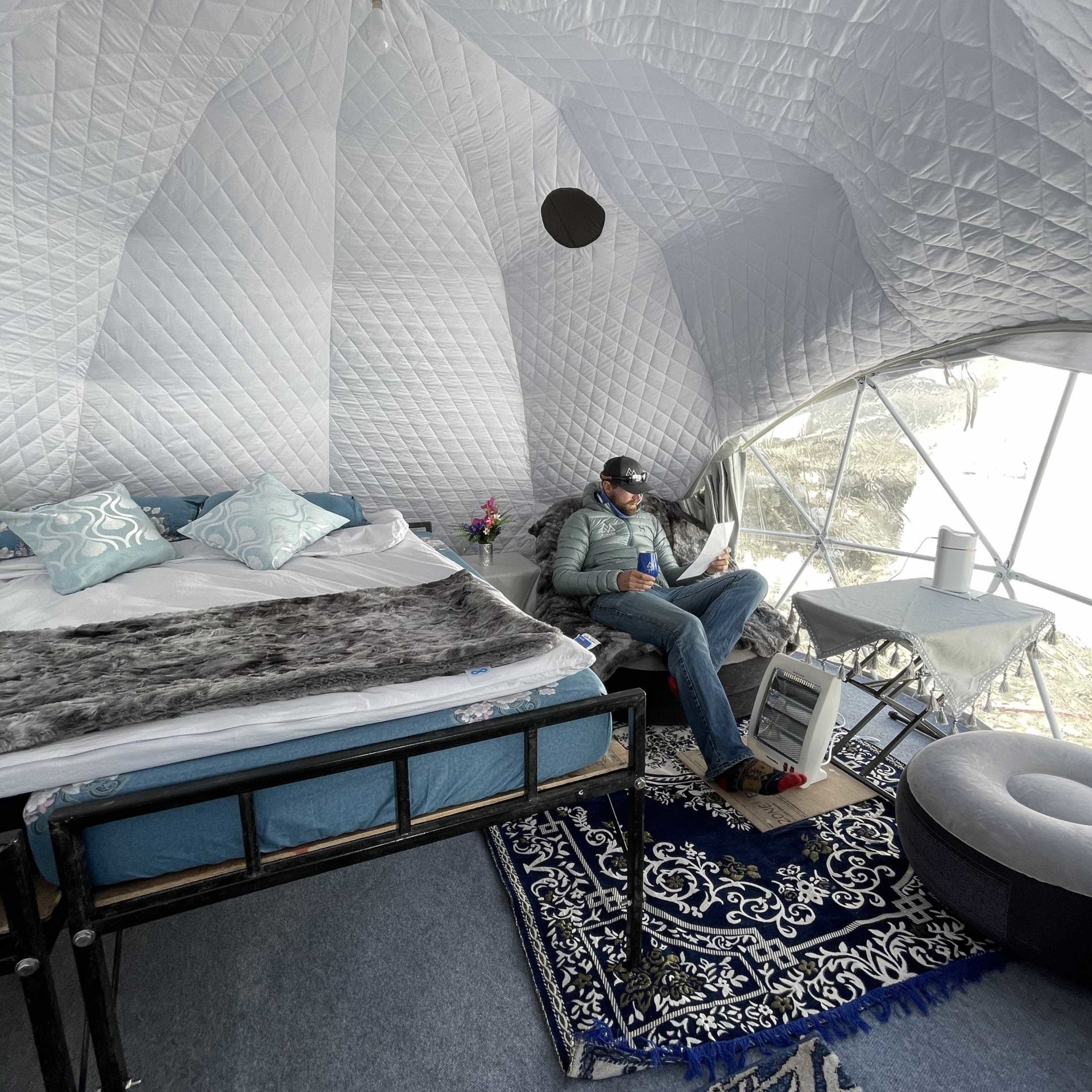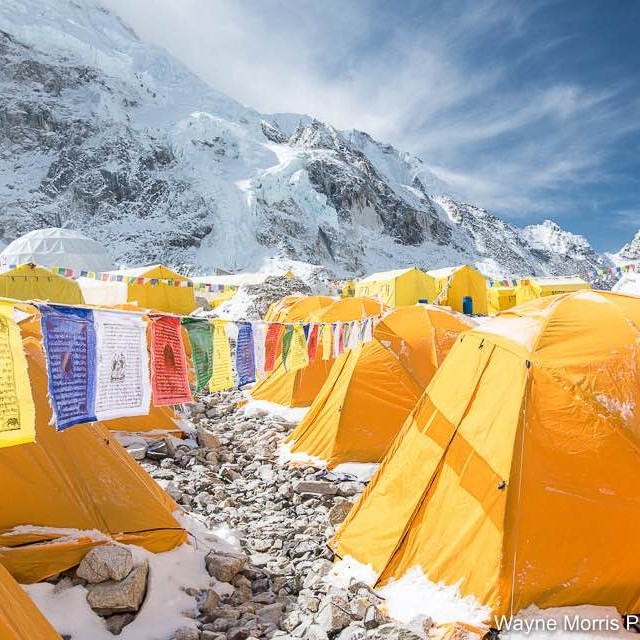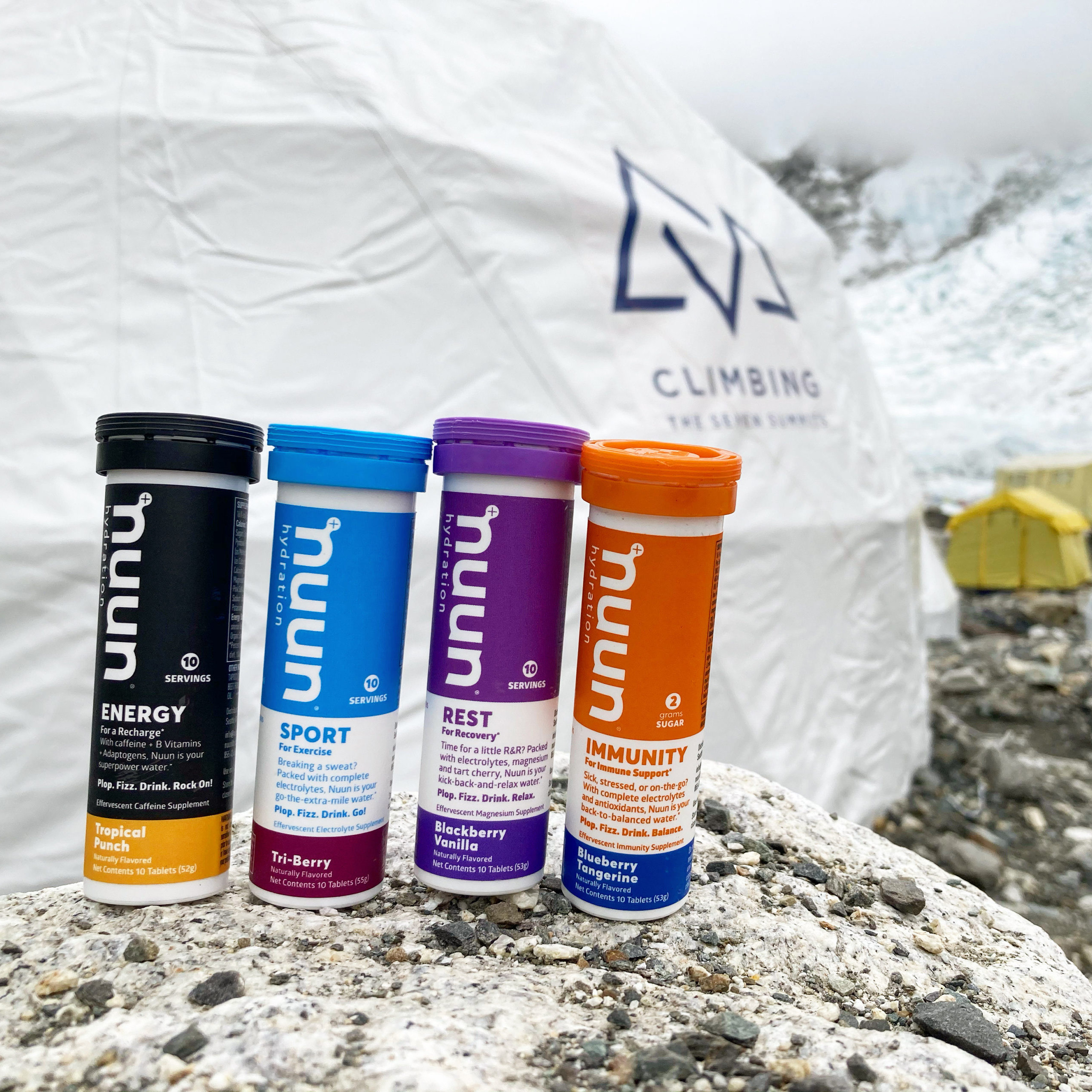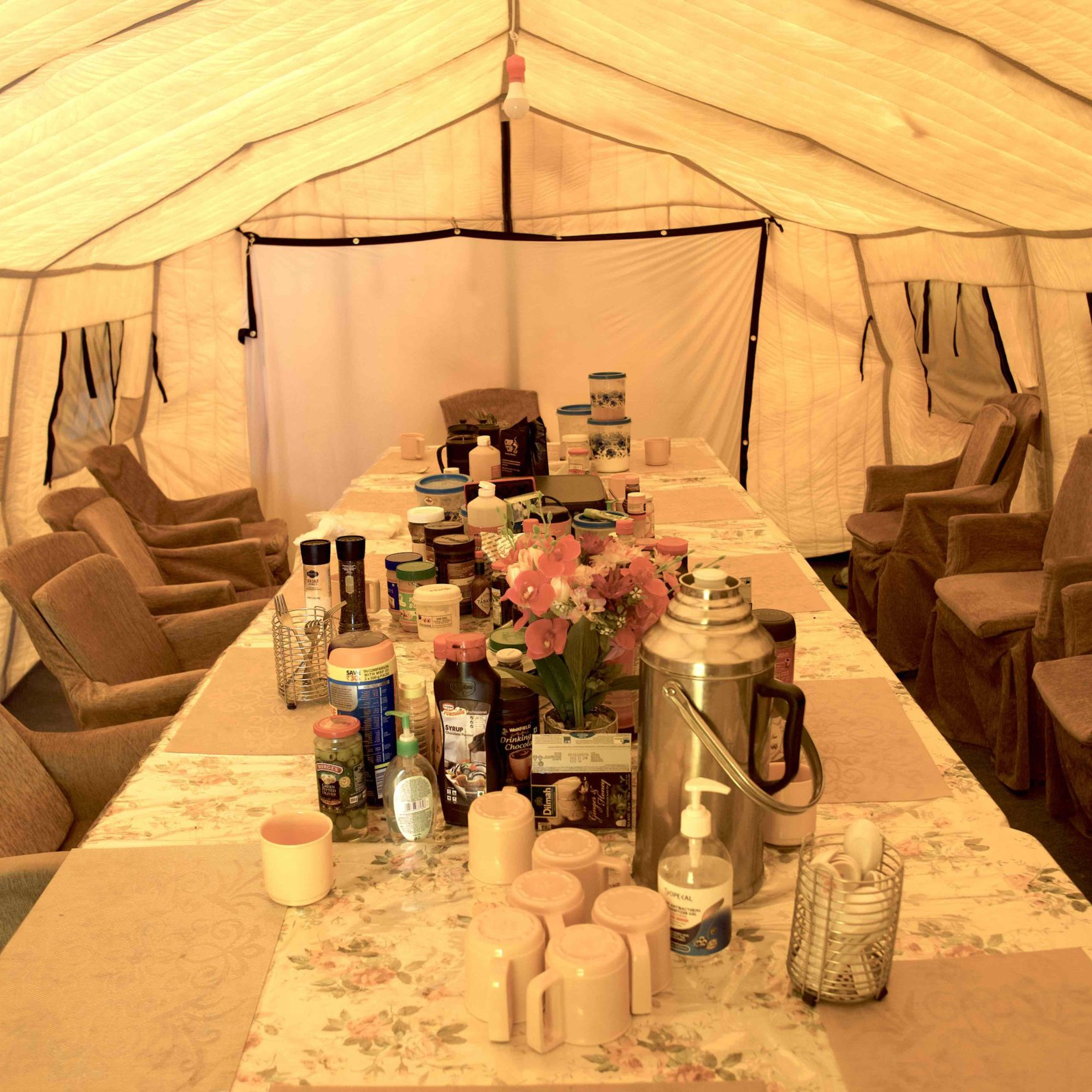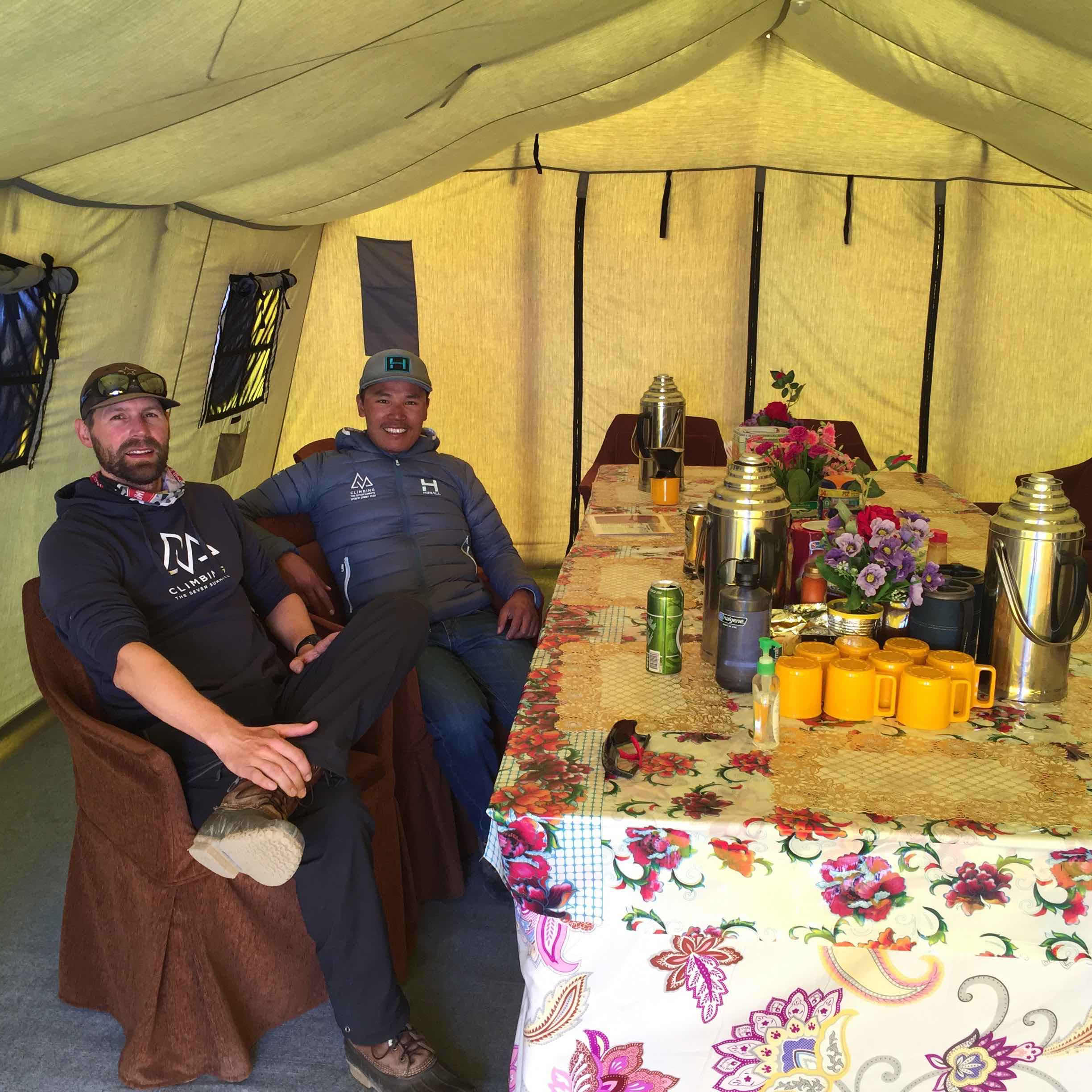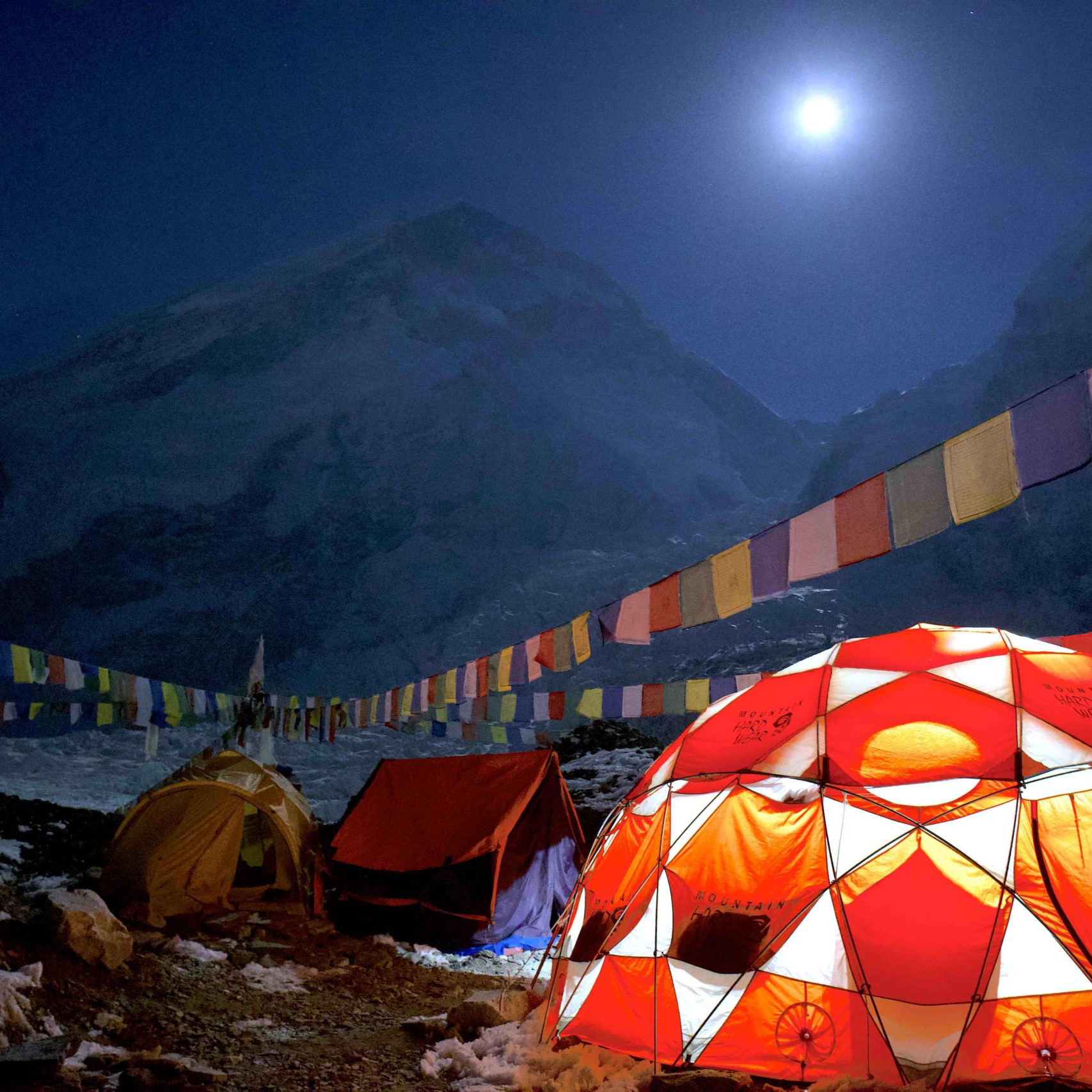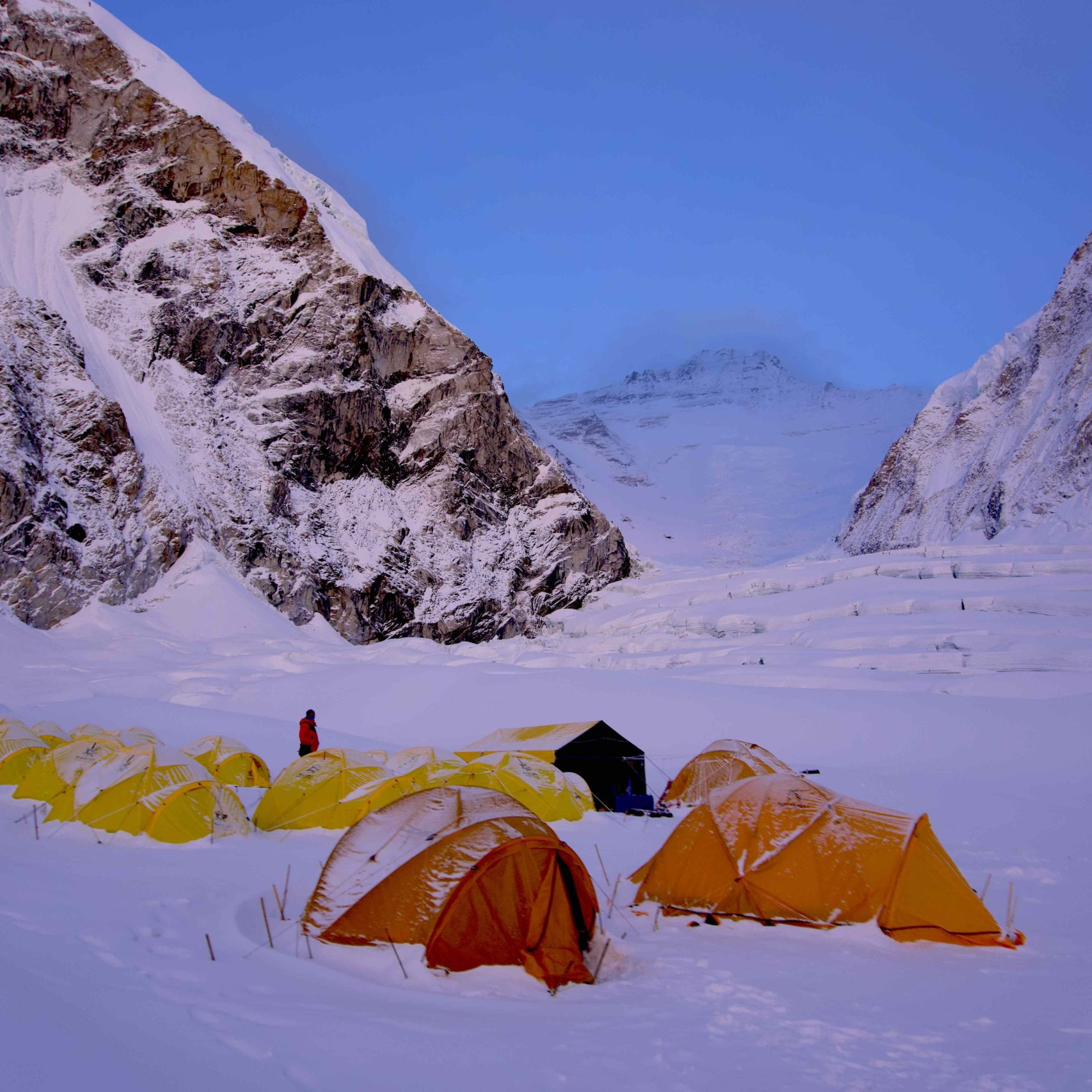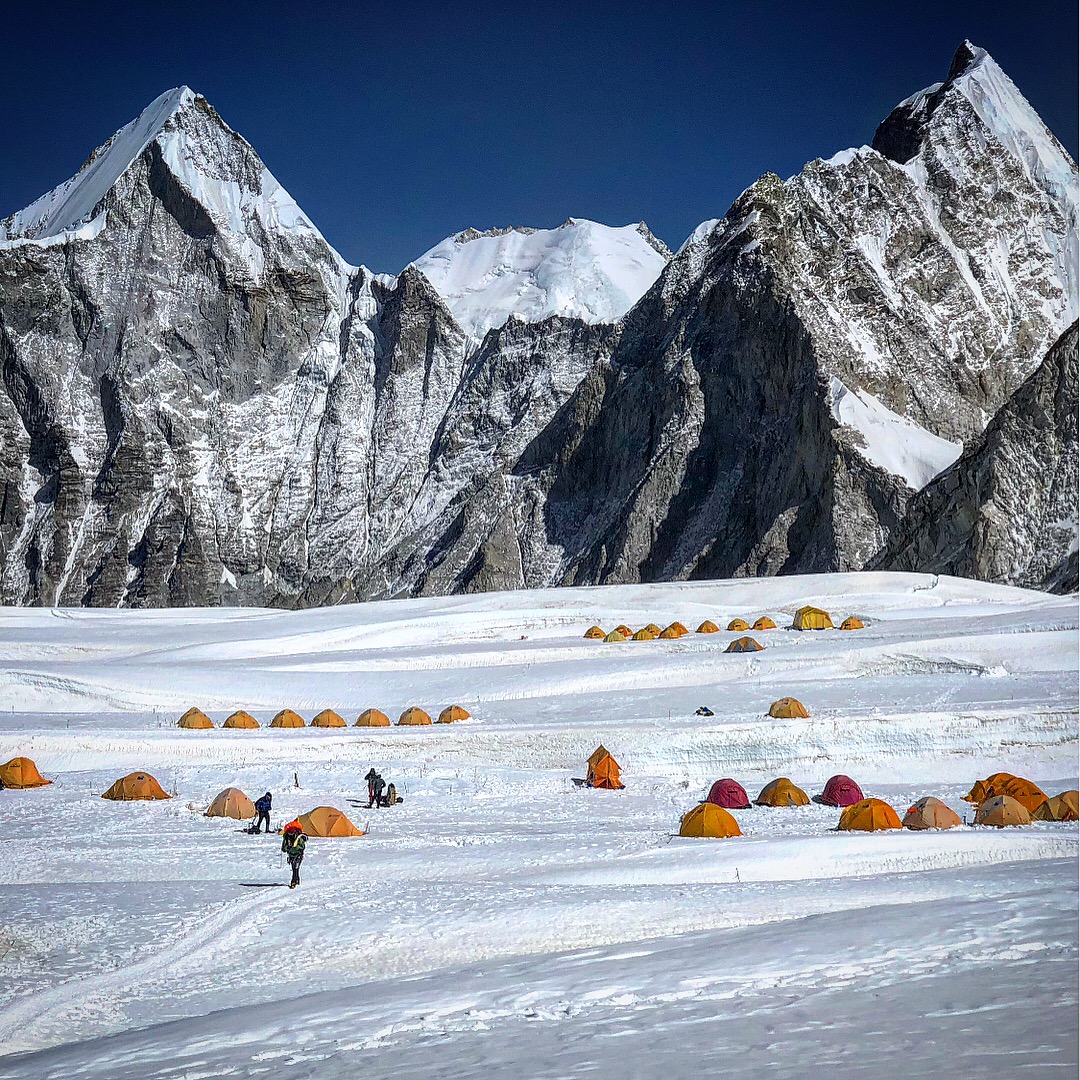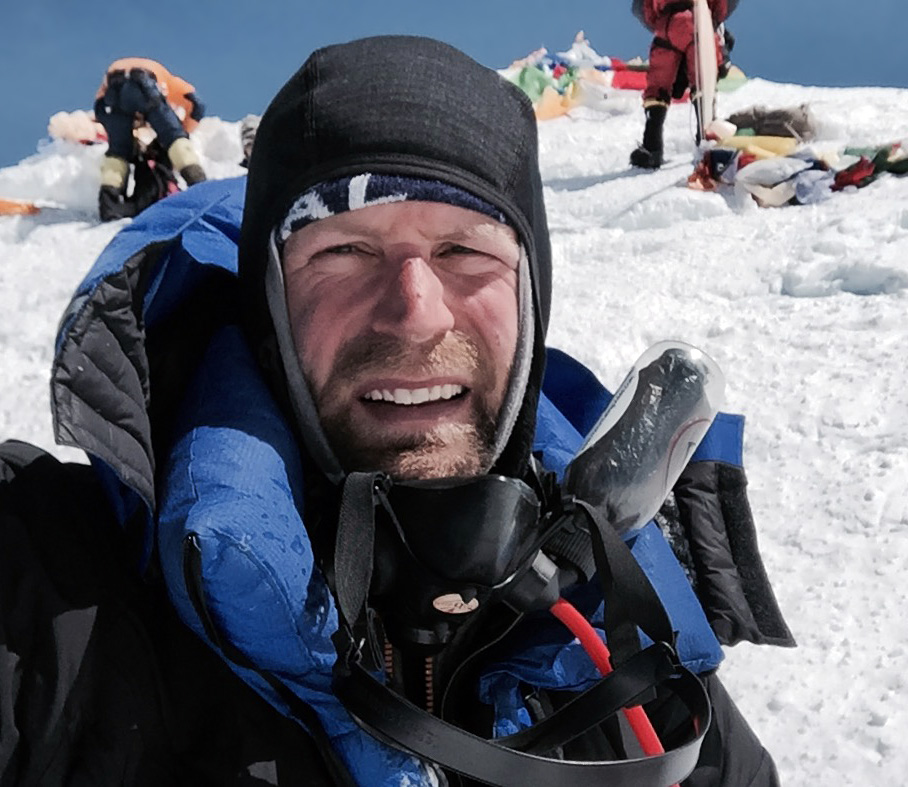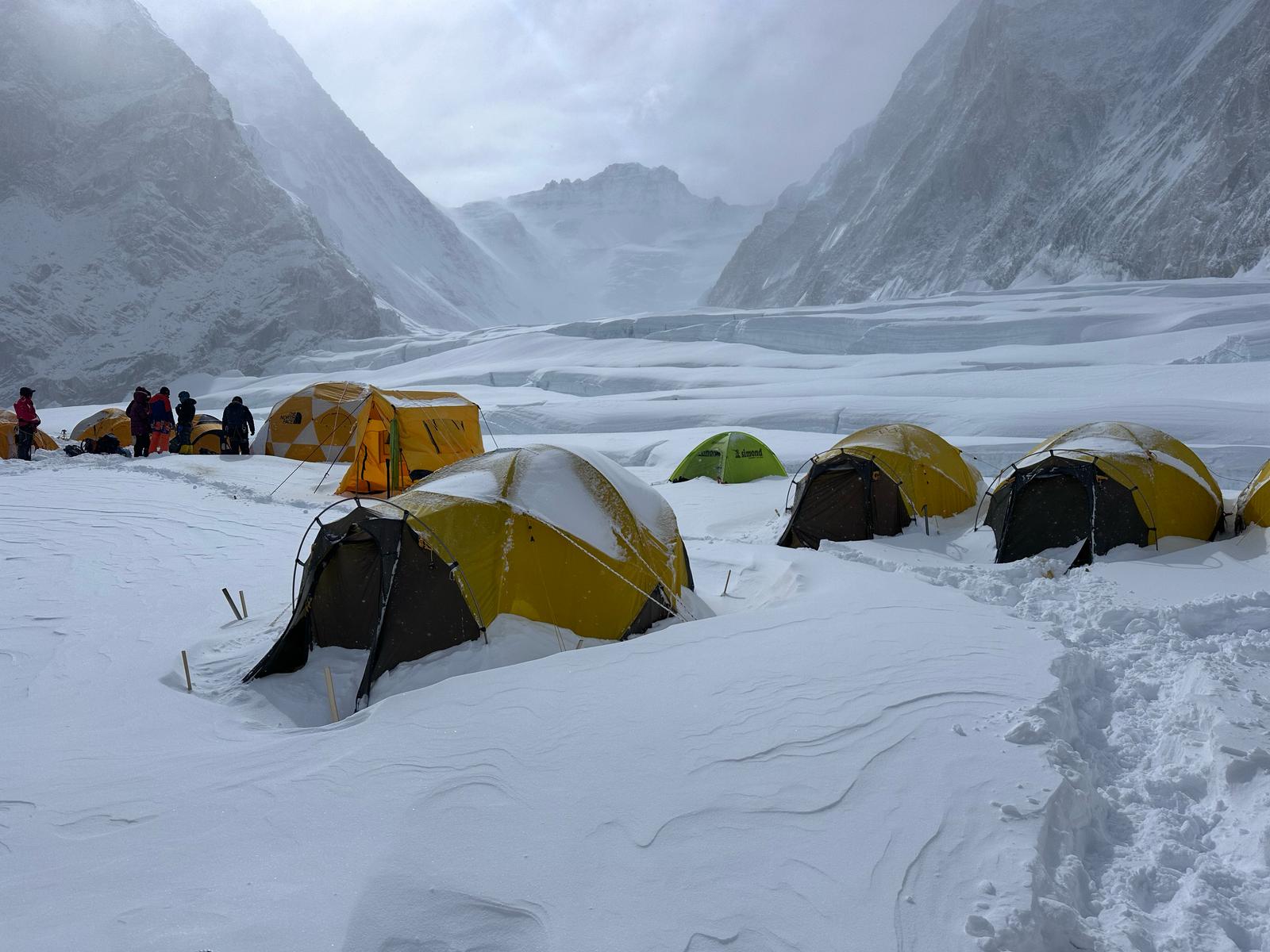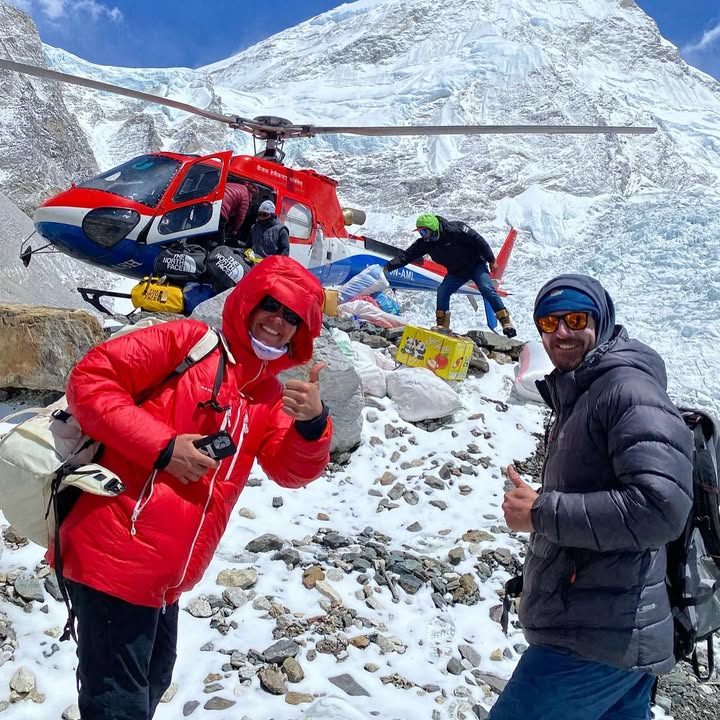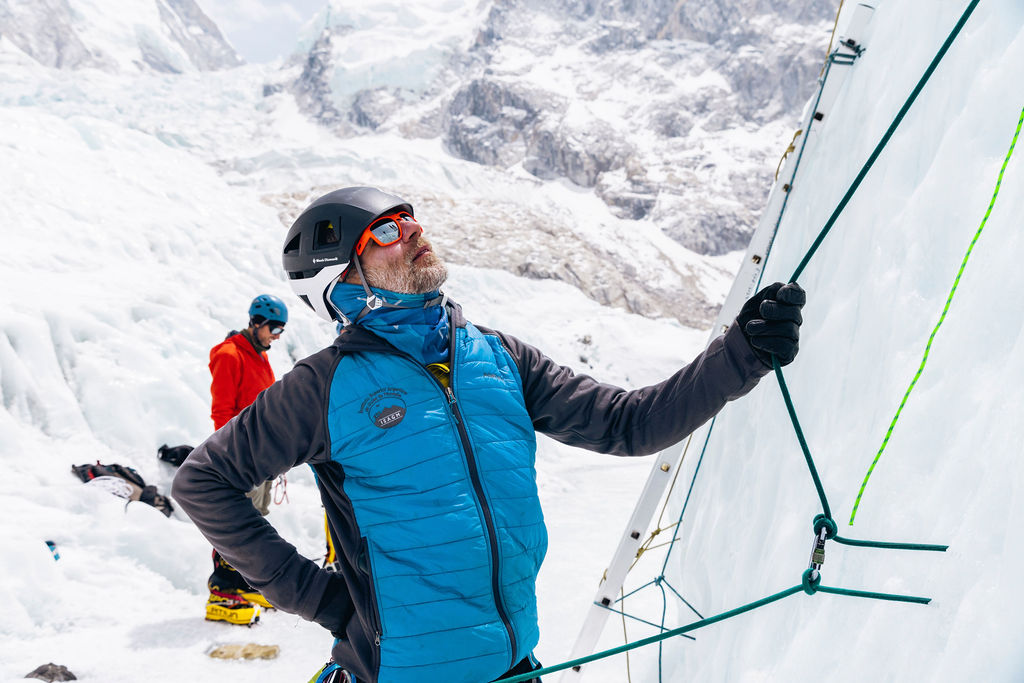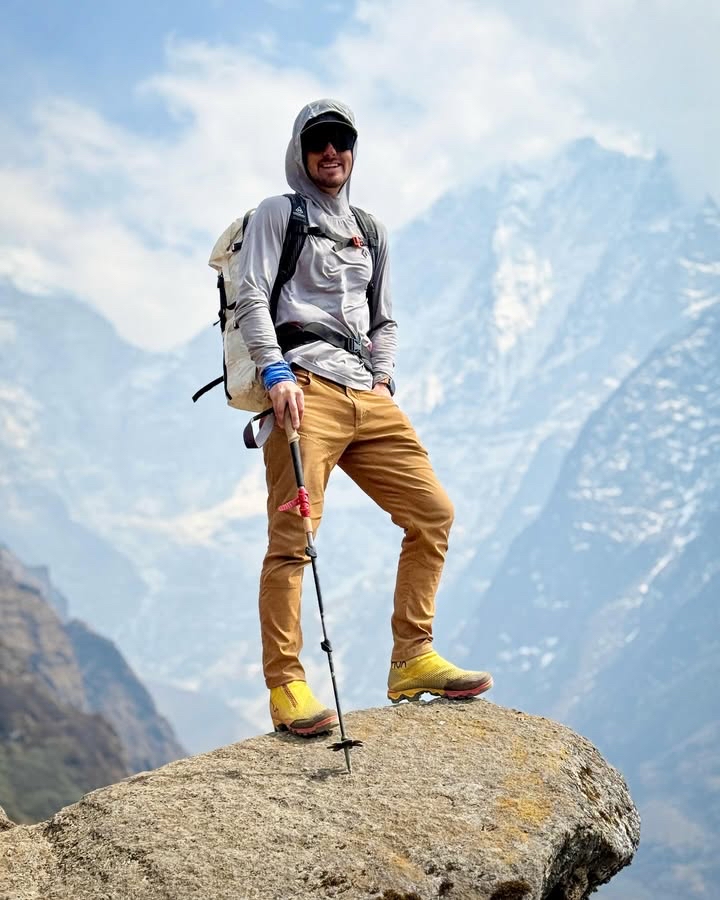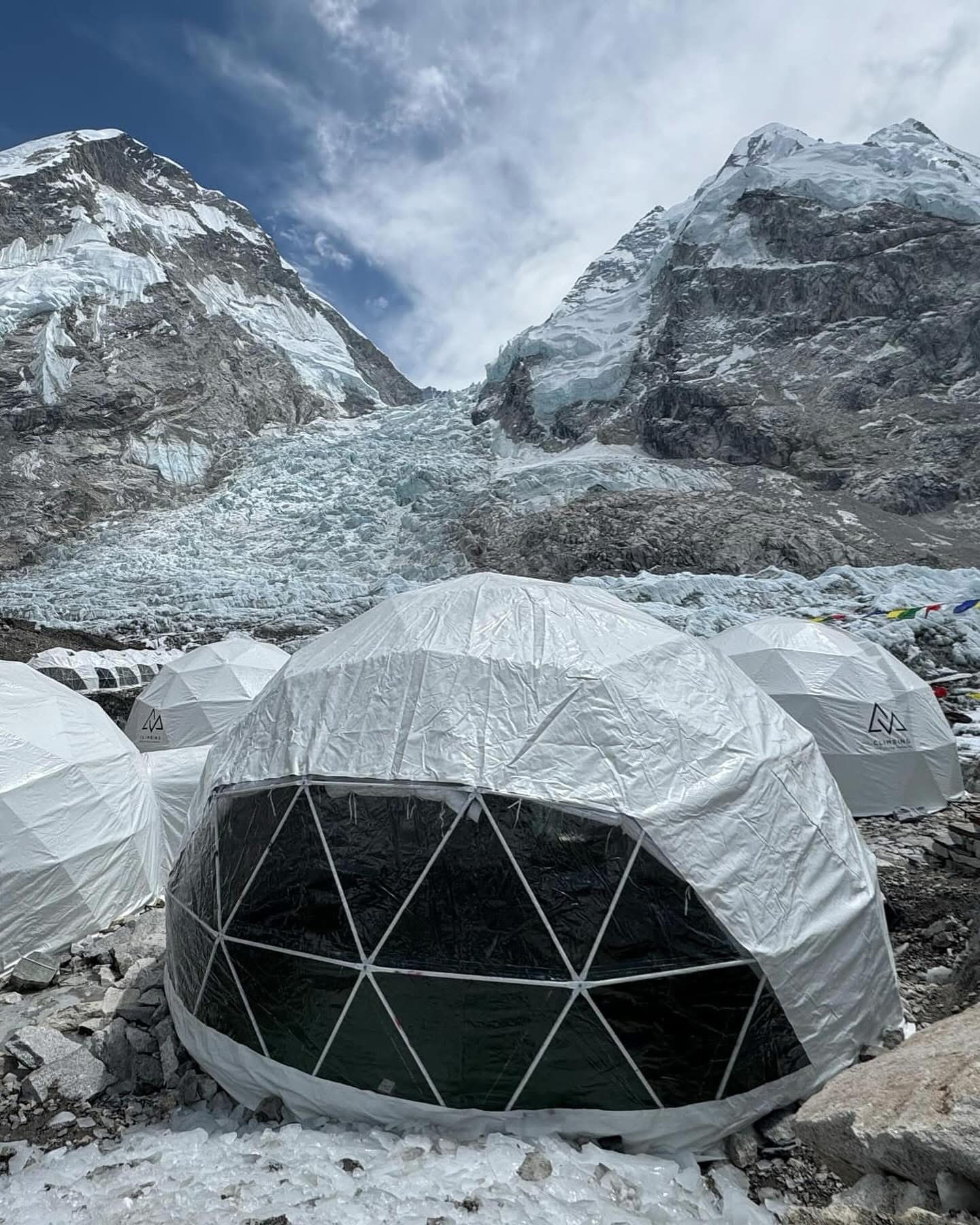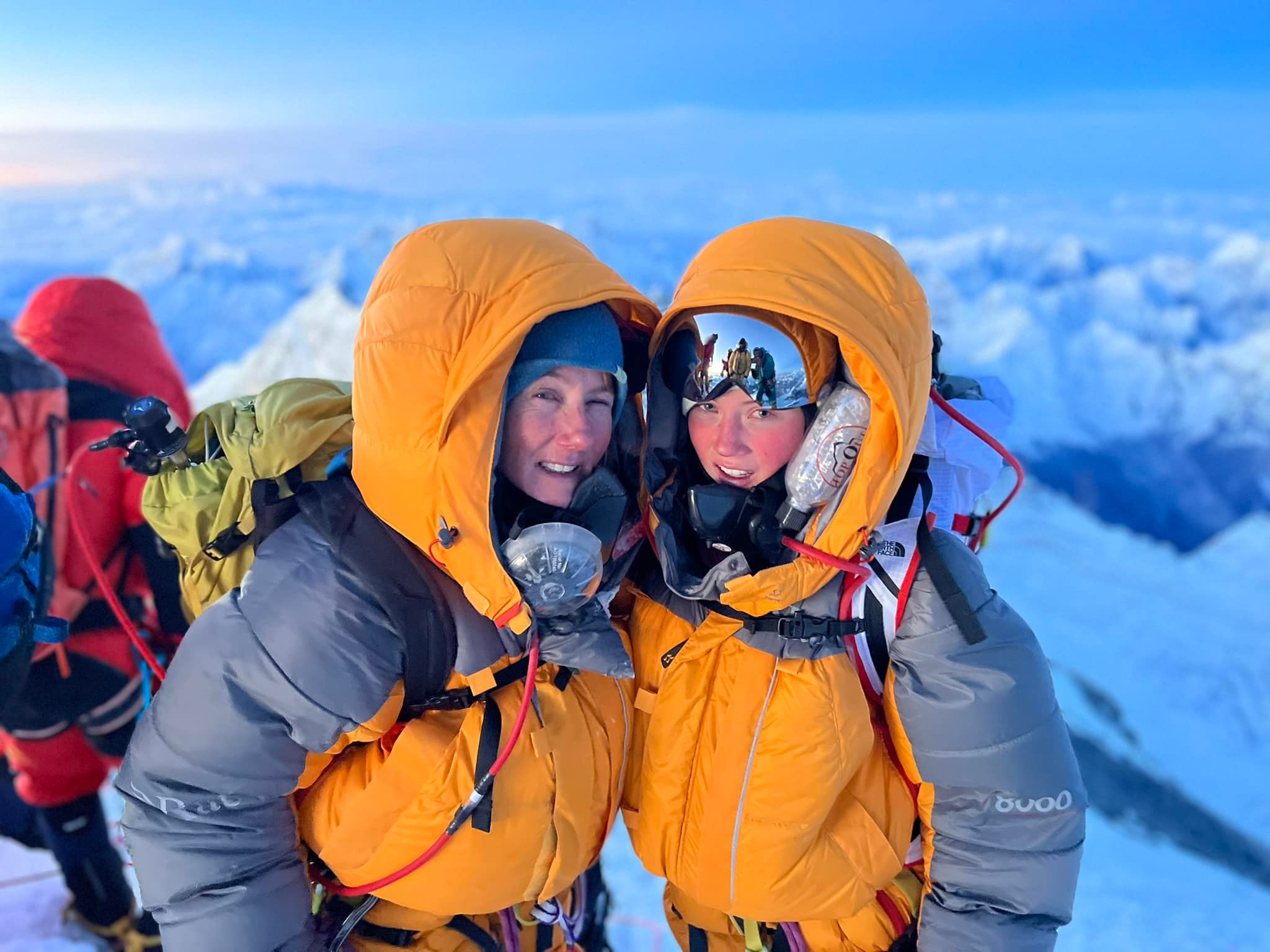EVEREST | Nepal
Price Range:
Starts at US$54,995
Elevation:
29,035 ft / 8850 m
Duration:
30-69 Days
Difficulty:
Advanced
Route:
South Side
Share Expedition
Mount Everest Expeditions with Climbing the Seven Summits
The crown jewel of any climbing career, Mount Everest is a transformative peak that is guaranteed to not just challenge you, but to change you.
Highlights:
- Discover what you are truly capable of
- Stand on the highest point of our planet
- Be humbled climbing amongst the giants of the Himalaya
- Enjoy lifelong friendships with your Sherpa and fellow climbers alike
- Climb through the famous and rugged Khumbu Icefall
- See the sunrise over the Himalaya from the highest point on earth!
CTSS is proud to be the gold standard in Everest expeditions.
Everest Expedition Options
Choosing the right Everest expedition level depends on your experience, how much supervision or personal attention you want versus autonomy, and what fits your budget. Finding the right balance can be tricky, but we are here to help you choose a program that’s right for you. Generally, the more experience you have, the more autonomy you can enjoy at a lower price point. As the level of guidance increases, so does the cost.
Here’s a good way to start:
Everest Expedition Add-Ons
Allowing you to customize your expedition to suit your needs is a huge priority for us.
As mountaineers ourselves we understand that it’s the little things that can make the difference. Comfortable, well rested climbers are successful climbers. While people often dismiss these add-ons as indulgent luxuries, for many it’s a game changer. We encourage you to tailor your expedition to suit your individual needs and talk with us about any other options you might be interested in.
Everest Expedition Gear & Logistics
Everest Expedition Amenities
- State of the art lightweight oxygen systems
- The best weather forecasting on the mountain
- 5-star accommodation in Kathmandu
- Trek accommodations at the finest teahouses in the Khumbu Valley
- Luxury EBC set up with dedicated manager to ensure camp is maintained
- CTSS team jackets and hats
- Unlimited 3rd party wifi available for purchase
- State of the art communications tent and facilities
More details on Everest Expedition amenities below.
Everest Expedition Amenities: The Big House
- The Big House is the heart of Everest Base Camp
- 10-meter insulated, powered, geodesic dome
- Cafe with barista and espresso machine and unlimited cappuccinos
- Heaters to keep the Big House cozy
- Viewing windows overlooking the Khumbu Icefall
- Raised, carpeted, and even flooring, further insulating from the glacier
- Mud room entryway with shoe storage
- Relaxation zone with couches and beanbags
- Yoga and stretching area
- Tables and chairs for working and relaxing
- Training seminar venue (oxygen clinics, etc.)
- Charging stations for your devices
- State of the art projector for movies
- Book swap library for all climbers
- Ping-pong table and annual tournament

Everest Expedition Amenities: Executive Domes
- Personal, powered, 4-meter geodesic domes
- Insulated throughout for comfort and warmth
- Personal heater and humidifier
- North American power outlet for charging
- Overhead lighting
- Queen sized bed with linens, pillows, and comforter
- Table and chairs for working and relaxing
- Raised and carpeted flooring for comfort
- Viewing window with curtains
- Covered entryway with shoe rack and gear storage
- Morning coffee and tea service delivered to you

Everest Expedition Amenities: Associate House Tents
- 2-room insulated house tent
- Entrance foyer with gear storage
- Single bed with linens, pillow, and comforter
- Overhead lighting
- Raised and carpeted flooring for comfort
- Table and chair for working and relaxing
- Power outlet for charging
- Personal shoe rack
- Morning coffee and tea service delivered to you
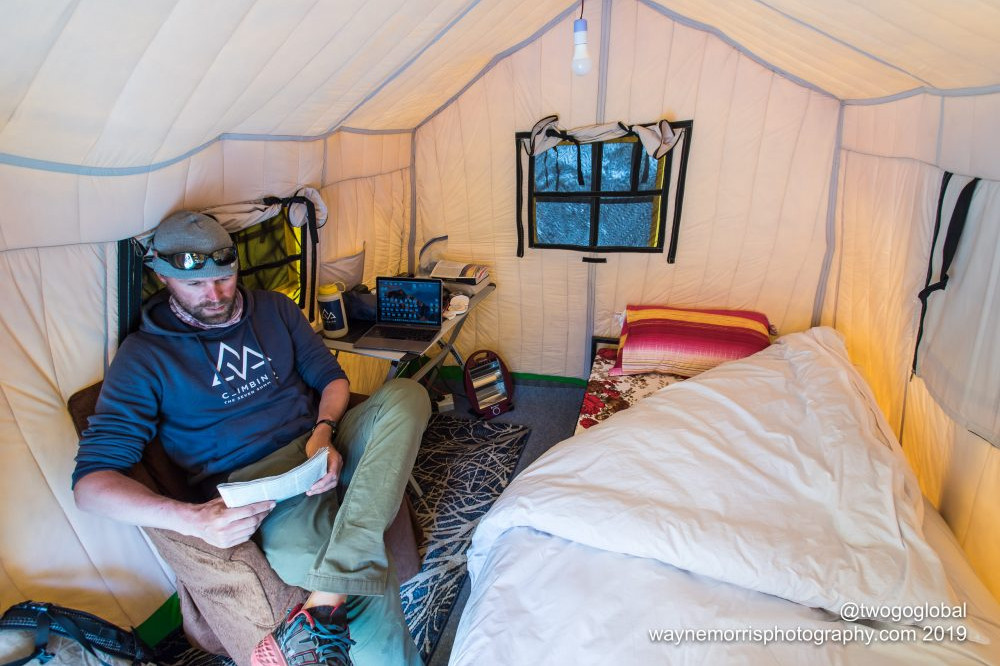
Everest Expedition Amenities: Standard Tents
- Individual custom-built 4 season tent
- Extra height and space for comfort
- Insulated flooring to avoid damp and cold of glacier
- 6-inch memory foam mattress with pillow
- Standard tent for all climbers

Everest Expedition Amenities: Dining at Camp
- Chefs, cook staff, and wait staff at Everest Base Camp and Camp 2
- Fresh meat, eggs, dairy, fruit, and vegetables helicoptered in weekly
- Full catering kitchen with gas stovetops and ovens
- Custom double walled, heated, insulated and carpeted dining tents
- Wide dining tables with padded and upholstered chairs
- Charging station in all dining tents
- Warm water for hand washing
- Hygiene stations with mirrors
- Healthy and nutritious high altitude food for the upper mountain
- Imported snacks and comfort food

Everest Expedition Amenities: Power at Camp
- Sustainable solar power at Everest Base Camp
- State of the art solar array and battery bank
- Generators for back up power
- Full time electrician at camp
- Charging stations in the Big House and dining tents
- Personal power outlets in Executive Domes and Associate Tents

Everest Expedition Amenities: Bathrooms and Sanitation
- Hot showers at Everest Base Camp
- Two-room shower tents at Everest Base Camp
- Dry room for changing in shower tent
- Wet room with overhead shower-head and mirrors
- Two-room toilet tents at Everest Base Camp
- Western Style sit down toilets
- Hand washing station with mirror in toilet tent
- Hand washing stations throughout camp
- Laundry service available for purchase
- Toilet tent at Camp 2

Everest Expedition Amenities: Upper Mountain Camps
- Dedicated kitchen tent at Camp 1
- Four full time cooks at Camp 2
- Dedicated kitchen tent at Camp 2
- Dining tent with tables, chairs, plates, mugs, and cutlery at Camp 2
- Real food and condiments (not dehydrated meals) at at Camp 2
- Toilet tent and waste management at Camp 2

Everest Expedition Amenities: Lobuche East Camps
- 8-meter insulated, geodesic dome at Lobuche Base Camp
- Full time cook at Lobuche Base Camp
- Dining facilities with tables and chairs at Lobuche Base Camp
- Toilet tent at Lobuche Base Camp
- Cook at Lobuche High Camp
- Kitchen tent at Lobuche High Camp
- Standard tents at both Lobuche Base Camp and High Camp to avoid tent setup
- Porter service to Lobuche High Camp
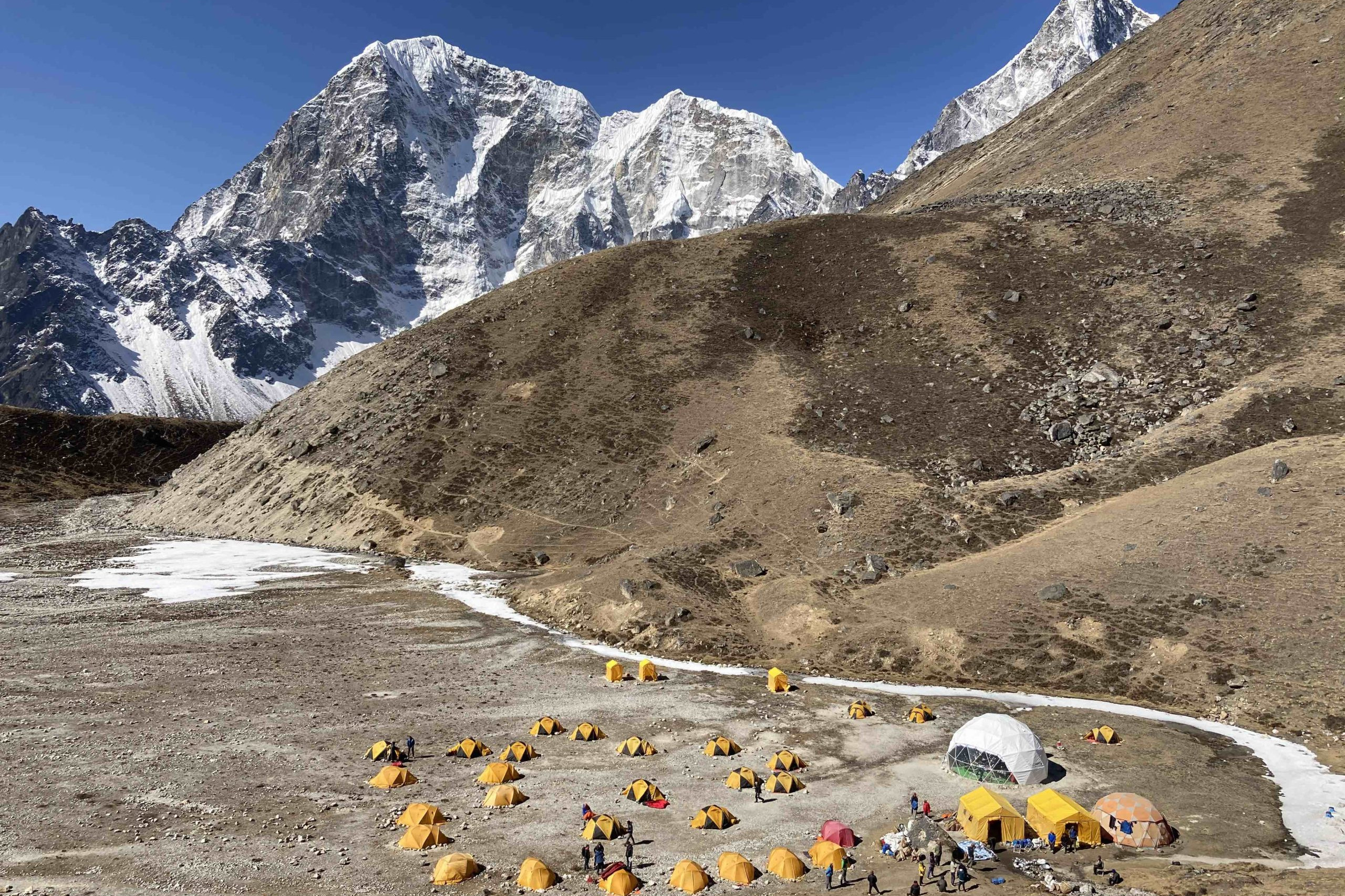
Don't take our word for it, hear it direct from our climbing family about CTSS' amenities on Everest.
After doing research on the various mountaineering guide companies, I could find no reason to use anyone other than Climbing The Seven Summits. Now that I’ve returned from a successful summit of Mt. Everest with CTSS, I would highly recommend them to any climber, for any summit in the world. CTSS has significantly raised the bar in the mountaineering world – and all the other companies know it.”
– William B, (USA)
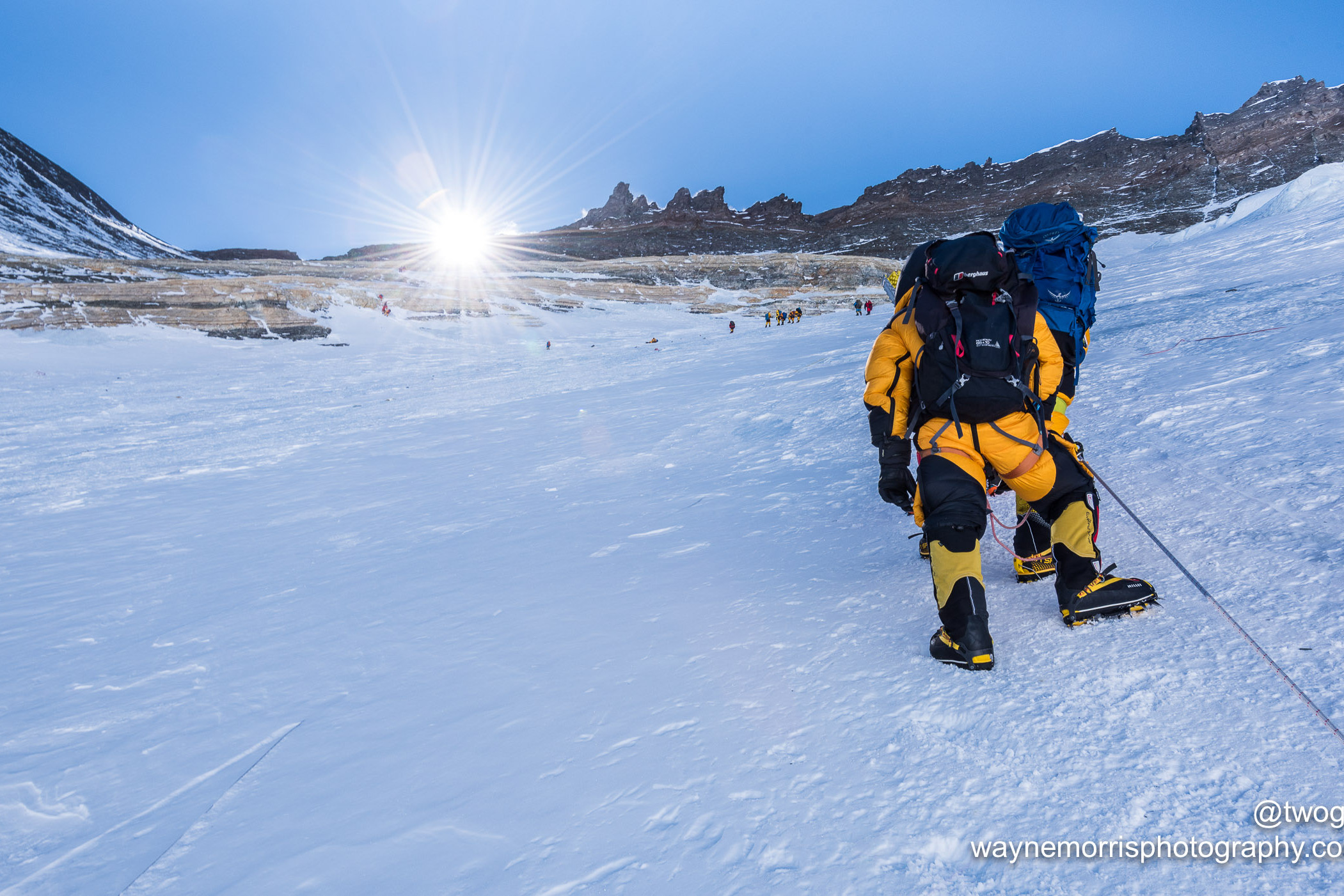
Everest Expedition Amenities
How early should I commit to my climb?
The sooner you commit, the better, as it gives you more time to prepare mentally and physically for the climb. Climbing Everest is a huge undertaking and something that you will want to work up to consistently. We have found that people are generally more successful when they commit earlier, as it gives them more time to shake out any problems that may arise, arrange their home and work life for being away for several months, and build their endurance and strength over time, thereby avoiding injury, etc.
What’s the best climb to prepare for Everest?
Manaslu is the best, most specific Everest prep. You get an understanding of how your body does at altitudes over 8000m and get familiar with the oxygen system and climbing with the Sherpa.
Will I need to purchase insurance?
Yes, trip insurance is required for this program, and it must cover the entire cost of the trip and include trip cancellation, trip interruption, medical expenses, repatriation, and evacuation for the entire length of the expedition.
Unforeseen hiccups both before and during the expedition can be very expensive. For instance, you may accidentally have a fall the week before you are due to leave, a family emergency might crop up halfway through your trip, or unsafe climbing conditions beyond anyone’s control may put a hard, premature end to the season in the name of your safety. In such circumstances, we want to protect you and your investment. It’s important to know that we pay for your expedition expenses well in advance, so these costs are already sunk and irrecoverable whether things get shut down on day 1 or day 60. Of course, every effort is taken to account for every eventuality in advance wherever possible.
Please forward a copy of your insurance policy for our records so we can assist you in the event of an emergency or hiccup during the expedition, as most insurers require us to contact them immediately.
Trekkers must have the same coverage. For more information on trip insurance, please visit the Trip Insurance page.
Why do we climb from Everest’s south side?
We prefer the south side of Everest for several reasons. While people think avoiding the icefall means a safer climb, we beg to differ. The south side has a lot more infrastructure, which means there are more assurances, including helicopter access and the HRA (Himalayan Rescue Association) medical clinic, staffed with specialty-trained doctors 24/7 at Everest Base Camp. If something goes wrong, we have much higher chances of evacuating you and getting you to a hospital in Kathmandu within hours. In contrast, if something were to go wrong on the north side, it could take days for a rescue and evacuation to be completed and to get you to the nearest hospital. The north side is also a more hostile environment, with windier, drier, and dustier conditions. Further, the border to Tibet has often been closed to climbers on very short notice over the last ten years.
What program upgrades are available?
The core add-ons for the Everest programs are extra oxygen, the Everest Executive & Associate Options, helicopter drop-backs, single-room upgrades, and/or deluxe rooms in the trekking lodges. If you are climbing Everest, you can add on an ascent of Lhotse. Please discuss these add-ons with our team, and we can help you decide if they are right for you.
It’s a long time away from home. Can my family and friends join me?
Absolutely! Your family and friends are welcome to join us for the trek to Everest Base Camp and even climb Lobuche East. Our standard trek to Everest Base Camp includes two nights at Everest Base Camp before departing back down the Khumbu Valley, but we have had people stay longer, and this can be arranged with our team. Please let us know immediately if anyone wants to join us so we can make arrangements for them. Space in hotels in Kathmandu and teahouses is limited during the climbing season, so we need to know about any additional arrangements as soon as possible.
What’s the deal with extra oxygen?
We give you plenty of oxygen to maintain a comfortable flow (3 L/min or so) throughout the climb. As standard, we give you 10 bottles (7 for you and 3 for your Sherpa). If you would like extra oxygen, we encourage you to add it, and we can arrange an additional three bottles. With the extra Os, you can run high flow (4 – 5L/min) throughout summit day, start oxygen at Camp 2, and have a bit extra in case of delays at the South Col, etc. Additional oxygen can help keep you warmer and move faster, providing a significant safety margin. You certainly don’t need the extra oxygen, but we’ve always considered it a good on-mountain insurance policy.
Will we be taught how to use the oxygen systems?
Top-quality, reliable oxygen tanks, masks, and regulators will be provided for you on your climb, and we will go through their usage in depth at Everest Base Camp so you can practice before your climb. We typically use oxygen from Camp 3 (roughly 24,500ft) to sleep and climb on and continue using it through to the summit. If you are interested in extra oxygen from Camp 2 (roughly 23,000ft) for the summit bid and to run a higher flow rate on summit day, please let us know in advance, and we can arrange this.
What’s the acclimatization process?
Our entire expedition, including the trip to Everest Base Camp, is slow-paced to allow our bodies ample time to acclimate. In the Khumbu Valley, we will gain altitude quickly, and this gradual process will help us acclimate properly and avoid altitude sickness. That means there is plenty of downtime while your body adjusts. Please bring a few books or movies on your devices and be patient. This is a slow process, but it will give you a much better chance at success on the climb and trek. Make sure to communicate with your guides directly if you are experiencing any altitude issues.
How much cash should I bring?
It is better to have more money than you need than not enough. While most things are covered on the trip once you land in Kathmandu (check the what’s included and not included list for more details), you will still need cash. The cash you need to bring includes money for visas, the Sherpa tip pool, and staff tips (customary but optional). Check with your expedition manager for up-to-date details on visas and tipping guidelines.
In addition, you may need more cash for consultation and treatment by the doctors at Everest Base Camp, expenses related to an early departure, and money for any helicopter ride out of Everest Base Camp. We are happy to schedule a helicopter departure in advance. Reach out to our team if you would like this option. Lastly, you will want to budget for miscellaneous costs like non-group meals, shopping, drinks around Kathmandu, and, while on the trip to Everest Base Camp, if you wish to access wifi, charge devices, enjoy sodas, specialty coffees, bottled water, and/or snacks. Reminder, your meals are covered on your way to Everest Base Camp.
Generally, we recommend bringing $2,000–$3,000 USD plus a credit card to cover all potential expenses, including an early departure, but you are unlikely to need all of this. Small denominations (1’s, 5’s, 10’s, and 20’s) are better, and although American dollars are accepted, you can change money into Nepali rupees at the change houses when you arrive. Rates are generally about the same, and we’ve never encountered one that isn’t legitimate. Also, there are now quite a few ATMs around town where you can withdraw local cash at a reasonable rate with your card. It is much more difficult to change money, especially large sums, once in the Khumbu Valley. Please let your credit card company know you will be traveling, so you can use your card (and not set off the fraud alert due to using the card in a foreign country)
How much gear can I bring?
We pay for yak and porter transport for two 50lb duffels (1x trekking duffel, which will travel with you, and 1x climbing duffel, which will go straight to Everest Base Camp). This should be more than enough weight. If you want to bring more than this, you will be expected to pay for the excess weight. This amount will include excess on the flight to Lukla and then be roughly $300/duffel each way to Everest Base Camp beyond the two duffel allotments. Transport is getting more expensive every year, so please leave the kitchen sink at home! We already have those at Everest Base Camp, anyway! Just bring what you need to be comfortable, but not more than that.
What immunizations do I need?
Make sure your immunizations are up to date. Consult your doctor, a local travel clinic, or the Centers for Disease Control and Prevention (CDC) for updated information on immunizations for Nepal and China.
Recommended immunizations include diphtheria-tetanus (DPT), polio, mumps-measles-rubella (MMR), meningitis, hepatitis A and B, cholera and typhoid, and rabies. Malaria shouldn’t be a problem in Kathmandu or on the climb. If you plan to travel to lower-elevation areas in Nepal before or after the climb, you should consider malaria chemoprophylaxis.
How should I pack?
For the trip to Everest Base Camp, climbers will need to pack in two separate duffels: a base camp duffel and a trekking duffel. The climber’s base camp duffel will not be accessible during the trek to Lobuche East or on the route to Everest Base Camp. It should contain all of your climbing gear (crampons, axes, down suit, etc) and items you won’t need until your Lobuche East acclimatization climb. Your trekking duffel will include everything you need for the trip to Everest Base Camp, including trekking gear, rain gear, street clothes, and a light sleeping bag. Trekkers will have everything with them in one duffel. Please keep everything you need with you, including medications and medical supplies. What will go in your trekking and base camp duffels will be covered in more detail in Kathmandu. Pack an additional small lightweight duffel in your luggage to leave street, travel clothes, and things you won’t need on the expedition at the hotel in Kathmandu.
What is the food like on the climb?
At Everest Base Camp, CTSS has the best chefs and food, hands down. Our teams are consistently blown away by the quality of food and hygiene at Everest Base Camp, considering where we are in the world. Our head chef trains at 5-star restaurants during the off-season. Think lemon crepes, cheese omelettes, chicken cordon bleu, pizza, fresh fruit almost daily, fresh salads, steaks, apple pie, fresh croissants and cinnamon rolls, and moist chocolate cake. We get shipments of fresh meat, fruit, vegetables, and other supplies weekly. Dave Hahn, non-Sherpa Everest summit record holder with 15 summits, shared this about Chef Kumar, “A real pro. Kumar is the reason I kept climbing in the Himalayas as long as I did.”
I have dietary requirements. Can you cater to those?
Yes, our chefs on Everest are amazing and well-versed in catering to a wide variety of dietary requirements and allergies. Please let us know in advance about your needs.
Why do I need to bring my own snacks?
We do a big Costco run for group snacks and meals for the mountain, and we’ll have lots of good stuff, but we want to make sure everyone has the food they need. Even people who aren’t usually picky about food can get really particular about what they can digest on Everest due to the extreme altitude, and getting lots of calories is really important. Gu packs, shot blocks, nuts, candy bars, cheese, etc, whatever it is that you know you can eat when you don’t want to eat anything is best. Getting specialty and familiar foods can be challenging in Nepal, so bring what you love from home. Also, bring a good supply of cough drops or hard candy, as you might like them in the dry air. We’ll have some for the team, but people go through them quickly.
How safe is the food and water?
As in Kathmandu, once on the trail to Everest Base Camp, it is highly recommended that you stick to treated rather than tap water. Boiled water is available at all teahouses, and bottled water is readily available at stores en route. To reduce trash and pollution in the valley, we encourage you to buy boiled or UV-treated water from teahouses. You can also bring your own water treatment solution. We will provide some teas and coffees at meal times during the trek, but if you want sodas, bottled waters, specialty coffees, or drinks outside of meal times, we ask that you purchase them yourself. Nepal isn’t known for its cuisine. The food on the trek to Everest Base Camp can become monotonous, but it’s high in energy and satisfying. Asian-inspired: there is a lot of fried rice, rice-based meals, soups, omelettes, etc. Stick to meals that use food obviously sourced from the Khumbu Valley.
We stay in reputable teahouses that maintain high standards of food hygiene, so our climbers and trekkers rarely get sick. It’s ok and somewhat expected to get a slightly upset tummy as you’ll be eating food that is different from what you are used to. At Everest Base Camp, we have our own incredible chefs who take every precaution in a fully equipped catering kitchen. They cook Western foods, have fresh food, including fruit, vegetables, and meat, resupplied regularly, and serve a good variety. CTSS is known for having the best food on the mountain, and given where in the world we are, that’s a remarkable feat.
What’s the accommodation at Everest Base Camp like?
For our standard tents, we use North Face VE-25 tents. They’re large, spacious (the same size as a 3-person tent), and extremely high quality. Inside, you will have a thick, comfortable 15cm sleeping mattress and a pillow. This is placed on top of a ground cloth to keep out the wet and cold. To avoid overcrowding your tent, there is a separate gear tent where you may store your climbing equipment.
We do offer a variety of upgraded accommodations, like our Executive Dome and Associate House Tent. If you would like one of these add-ons, please let our team know.
Will I be sharing a tent?
No, for the majority of the climb, you are not sharing a tent. During your stay at Everest Base Camp, you will have your own tent to spread your gear out and call home. There will be times on the upper mountain where you will need to share a tent with another climber to reduce the number of dangerous loads the Sherpa needs to carry through the treacherous Khumbu Icefall. It’s also a lot warmer and safer when you can keep an eye on each other.
What about phones & wifi?
We understand it’s important to stay in touch with friends and family, and keep an eye on your inbox. There are a number of ways to do this. We suggest picking up a local Ncell SIM card in Kathmandu with a data package. Signal is reliable in Kathmandu, and for most of the trek up the Khumbu Valley, it is strong enough to support both calls and data. Once you get to Everest Base Camp, cell service becomes unreliable, although it can sometimes pick up a low signal (not enough to support data).
You can buy a local Ncell SIM card in Kathmandu, and there is an Ncell store close to our hotel that we are happy to show you. Your phone must be unlocked, and you will need your passport to get a SIM card. You can get recharge cards almost anywhere. This is by far the most affordable way to stay connected and get data up to base camp in the Khumbu Valley. If you’d like to use your own SIM card, talk to your provider about activating international roaming, and you should be able to connect to the local networks. At Everest Base Camp, when the cell service runs out, you can connect to the wifi network and make calls on FaceTime, WhatsApp, Facebook, or Skype. Wifi at Everest Base Camp is available for purchase, so you only pay for what you use. Please note that a third party operates this, and we have no control over whether it works or the cost. There are also internet cafes in the bigger towns along the route to Everest Base Camp to get online, and third-party wifi is available for purchase at most teahouses. Please keep devices like laptops, smartphones, and iPads waterproofed in your trekking packs so they don’t break in your duffels. You will be responsible for your own valuables. There will be a satellite phone with the team, but we don’t expect to use it until above Everest Base Camp. It can be made available to team members at $3 per minute. If you plan to bring your own satellite phone, you are required to register it with Nepal, which costs thousands of dollars. Should you choose not to register it and use it anyway, you do so at your own risk.
How heavy will my pack be?
In general, climbing packs on Everest are relatively light. You will likely be carrying 15lbs – 30lbs (7kg – 12kg) most of the time while climbing and less on the trek into base camp. While climbing, you should be prepared to carry your gear for the day and some personal items for the mountain. Our Sherpa team will carry all of the group gear and help with personal gear where possible.
How do I charge my devices?
Given the high cost of electricity in the area, teahouses charge you to recharge and power your electronic devices along the way to Everest Base Camp. The price tends to go up as you move up the Khumbu Valley, and a portable battery pack is a good idea. You will need to bring an adapter. This cost is your own expense. Once at Everest Base Camp, we will have power and power cords that fit North American plugs. Charging is dependent on the sun or on fuel for the generator, so it’s important to note that it won’t be available all the time. We will try to keep it available enough to meet your needs.
Can I have my own room at the hotel and teahouses?
All hotels and teahouses are double or triple occupancy, but once we get to Everest Base Camp, you will have your own tent to spread out in. If you want a single room in Kathmandu and on the way to Everest Base Camp, we can arrange it at an additional cost. Sometimes, teahouses are full during the climbing season and may not have single rooms available, so please let us know as early as possible to give us the best chance of securing a private room. Again, this is adventure travel, and we ask you to roll with the punches if they are not available.
Do I need a visa? How do I navigate Kathmandu airport arrivals?
Often, just getting to Nepal can be the hardest part. Once you’re on the ground, it’s time to relax. Upon exiting the plane, walk to the left of the customs area and have your passport, photo, money, and visa form handy. You must pay for your visa first at the desk straight ahead and to the left before getting in the Visa Upon Entry line (far left of the large room). Purchase a single-entry Nepali visa: either the 90-day visa for Everest and Lhotse climbers or the 30-day visa for trekkers and Lobuche climbers.
What’s not included during my trek up the Khumbu Valley?
We cover almost everything once we fly into the Khumbu Valley, so there shouldn’t be too many other expenses that you need to worry about. The biggest cost will likely be tips. The Sherpa tip pool, collected at the beginning of the climb, will be distributed to the entire team at the end of the climb, including cook and dining staff. People often tip their individual summit Sherpa a bit more than this, and often tip their guide as well. The other personal expenses people incur include wifi (through third-party providers), additional snacks and drinks, device charging, and toilet paper. Bring a portable charger and pack a few extra rolls of toilet paper for the trek in.
What if we can’t get to Lukla in time because of the weather?
It’s good to remember that we are in the Himalayas, and the weather can be variable, so it’s essential to be patient. Generally, it’s no more than a one or two-day delay. If we’re unable to get on the plane, we’ll look at hiring helicopters to reach a safe spot in the Khumbu Valley to stay on schedule.
What’s the deal with blog updates?
We know family and friends will want to follow your progress, so we will be posting regular updates to the Climbing the Seven Summits blog here: https://climbingthesevensummits.com/blog/. We update it as often as possible, but make sure your loved ones know that ‘no news is good news’. If a few days pass between updates, it doesn’t mean anything is wrong; it simply means we are probably busy climbing.
Advice for Climbing Everest from Mike Hamill.
Didn't find an answer to your question? Don't hesitate to ask us.
Everest Expedition Success & Reviews
2018:
100%
Success Rate
2019:
100%
Success Rate
2020:
0%
Covid Cancelled
2021:
60%
Covid Impacted
2022:
100%
Success Rate
2023:
85%
Success Rate
2024:
90%
Success Rate
2025:
84%
Success Rate
2026:
TBD
Join Us & Be Part of the Success
Don't take our word for it, hear it directly from our CTSS family.
Everest Expedition Testimonials
“I just wanted to express my appreciation and thank you for creating a company that puts clients’ needs in focus without compromising on safety or quality of service. Everest was my 4th expedition with CTSS, and there will be more in the future. Every time I get reassured that by choosing CTSS, I not only make the right choice, but also develop my skills as a climber. The guides are excellent, my dietary needs are taken seriously, and I always end up meeting wonderful people.
With this expedition, I wanted to specifically thank you for acting fast to arrange a helicopter rescue and hospital treatment. Thank you for always finding time to talk to me and reassuring me that everything will be fine. In moments of crisis, it’s easy to lose focus, but you made sure that I had a chance to go back to the mountain. Thank you for customizing my summit push – it was excellent! Although I felt that I didn’t fully recover and had moments of struggle, I knew that the plan would work out fine. And it did! So thank you from the bottom of my heart.
I’m looking forward to climbing more mountains with CTSS.”
– 2025 Everest Climber, Anna K.


“From my earliest interactions with CTSS, there was a difference. Not only an emphasis on safe and enjoyable climbing, but also, critically, the social dynamics of the team, the nuances of individual needs, and patient and complete answers to months of questions. My first attempt on Everest surpassed all expectations: smooth CTSS logistics ensured bags were never misplaced; outstanding staff who provided spectacular meals; and remarkably comfortable facilities at base camp. The entire CTSS team provided encouragement and support, generously sharing knowledge and experience on each acclimatization climb. Positive attitudes throughout turned a “climb” into a marvelous experience. Unsurprisingly, not everyone summits Everest for the first time. CTSS accommodated occasional setbacks with a flexible climbing schedule, tailoring each rotation to my progress. While I was unable to summit due to unexpected health issues, the world-class expertise of my guide and CTSS safety practices ensured an exceptionally well-managed evacuation and timely treatment with a full recovery. If you don’t make the summit, consider the sum of the parts: all those acclimatization climbs en route to base camp, achieving your own elevation objectives, the extraordinary people you meet, engagement with Nepalese culture, the opportunity to strengthen climbing skills and experience, and climbing with some of the best guides in the world.”
– 2024 Everest Climber, Susan A.
“Thanks to CTSS, I had the most incredible experience on my journey to the top of the world. Everyone was super friendly, from the kitchen staff, porters, Sherpa, guides, Mike, to Caroline and her crew back in the office. The food, the accommodation, and the extra bit of luxury that CTSS offers are most definitely worth every penny. I had a pretty hard time getting sick twice on my journey, but Thunang (my Sherpa) couldn’t have looked after me better, bringing me tea, food, and carrying a heavier load to make it easier for me. I wouldn’t have made it to the summit without him. Despite Everest being a highly dangerous place, I felt safe and in good hands at all times, as I could tell how well-trained all their Sherpa and guides are. And despite opting for a Supported Climb instead of group, the camaraderie around BC and on the mountain was spot on and made my experience on Everest one I’ll never forget!”
– 2024 Everest Climber, Lee D.


“I had the great privilege of summiting Everest in 2023 with a team of amazing CTSS guides and clients. CTSS is, without a doubt, the premier Everest guiding service. After spending weeks at base camp, you get a sense of what the other guide companies are like. No other company was remotely close to CTSS; the base camp, food, attention to detail, experience of the guides and sherpa, customization options (tents, Os, etc)…CTSS was far and away the best organization on the mountain. The Western Team climb was exactly what I wanted out of my Everest experience. The camaraderie of our team was a big part of our success and made everything more enjoyable. I’ll be close friends with my teammates for life. Summiting Everest was an intense and moving experience that I’ll always cherish. I can’t say enough great things about CTSS for making it possible!
– 2023 Everest Climber, Ben S.
“Summiting Everest was an unforgettable experience, and I’m incredibly grateful to have shared it with such a professional, supportive, and fun team. I really appreciated the care and attention from everyone throughout the expedition. CTSS’s attention to the small details made a huge difference in such a demanding environment.”
– 2025 Everest Climber, Ilknur C.
“CTSS is a class act! The team and facilities are world-class. Every detail of the expedition was perfect. Mike’s decision-making, Tendi’s guidance, the strength of our Sherpa team, and the food Kumar was producing were second to none. You only had to see the look on the faces of team members from other operators to know we had something special. I can’t wait to climb with CTSS again.”
– Peter W.
“After researching the various Everest mountaineering guide companies, I could find no reason to use anyone other than Climbing The Seven Summits. Now that I’ve returned from a successful summit of Mt. Everest with CTSS, I would highly recommend them to any climber, for any summit in the world.”
– William B.

At CTSS, we believe your expedition starts long before you reach the mountain.
That’s why we provide every climber with holistic, personalized pre-expedition support, no matter the objective.
When you join a CTSS expedition, you become part of the family. You’ll be paired with a dedicated Expedition Manager and backed by our full team of experts, with guidance on everything from personalized strategy and progression planning to gear selection, training, travel logistics, and insider tips to help you get the most out of your climbing journey.
We’re here to make sure you show up prepared, confident, and ready to thrive on the mountain and beyond.
6x Reasons to Choose CTSS
Safety
Your safety and success are our top priorities, in that order. We make conservative decisions, plan redundancies, and all our guides have wilderness medical training, safety and rescue plans, and access to doctors around the clock to help keep you safe.
Value for $
We keep our overheads low to pass savings on to you. We are proud to offer the best service at the most competitive price, without compromising on safety or taking shortcuts in logistics, staffing, or infrastructure.
Holistic Approach
Our service goes far beyond the mountain. Think of us as your climbing coach; we'll be there from start to finish to prepare, debrief, and plan your progression as a mountaineer, whether your goal is a single summit or the Seven Summits.
Guides & Team
Guides can make or break your climb. We hand-pick the most qualified, tenured, tested, and personable guides and Sherpas in the world. Owner and mountaineer Mike Hamill personally oversees the logistics and management of each expedition.
Our Values
We care about you, our people, and the planet. A portion of every expedition goes to the Tiger of the Snows Fund, supporting outdoor tourism workers and their families. We follow strict Leave No Trace principles and live by our No D*ckheads Policy, because who you climb with matters.
Success
We have an unparalleled summit success rate. How? We do it in a myriad of ways; like a great chef's secret sauce, we've fine-tuned the recipe over decades. Most importantly, we believe in you & your ability to achieve your goals, and we are invested in putting you on top.
Everest Inquiry Form
Need More Experience?
Consider these expeditions






